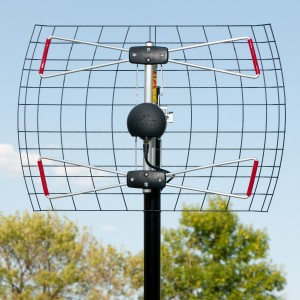 One night, almost 7 years ago, I had an epiphany while flipping through our over 100 TV channels. There was nothing on that I wanted to watch. The more I thought about it, the more I realized we probably spent more time looking for something towatch than actually watching. Add in the fact that most of the day there was no one home to watch anything, I began to wonder why we would pay money (a lot of money) for this service. So, we cut the cable. In its place we used a combination of over-the-air TV, Netflix streaming, iTunes, and Hulu. What we found, was instead of spending hours at night looking for something to watch, we were able to ACTUALLY watch something.Usually, exactly what we wanted to watch, and when we wanted to watch it. And without the giant cable bill.
One night, almost 7 years ago, I had an epiphany while flipping through our over 100 TV channels. There was nothing on that I wanted to watch. The more I thought about it, the more I realized we probably spent more time looking for something towatch than actually watching. Add in the fact that most of the day there was no one home to watch anything, I began to wonder why we would pay money (a lot of money) for this service. So, we cut the cable. In its place we used a combination of over-the-air TV, Netflix streaming, iTunes, and Hulu. What we found, was instead of spending hours at night looking for something to watch, we were able to ACTUALLY watch something.Usually, exactly what we wanted to watch, and when we wanted to watch it. And without the giant cable bill.
Some Options for Cutting the Cable:
- Get a digital antenna and watch over-the-air channels with your digital capable TV.
- Connect a computer and wireless keyboard to your flat panel TV. You can use just like any computer monitor and watch Netflix, Hulu, or any other video content source you like.
- Get a phone adapter and stream from your smart phone. Be it Android or Apple, you can connect your phone to your TV and watch content streamed from palm of your hand. AppleTV, Roku, and Chromecast are some good options for this, as well, and AppleTV and Roku offer a standalone interface as well (no phone required).
- Use your gaming console (Wii, WiiU, Xbox, Playstation) to stream content.
Fast forward 7 years, most people know about Netflix, but are still a little confused about the over-the-air TV.Since the FCC’s 2009 decision to have all broadcasters switch to digital broadcasting, over the air signals have been broadcast (mostly) in high definition. What does this mean for us? Well, we can get many (20 or more) channels for free. Right now, you’re probably thinking about those old “rabbit ears” covered in aluminum foil and the constant readjusting to get a good picture. Yes, this is the same concept, but technology has made this method of getting TV signals so much better. In fact, of all the TV services we’ve had (Charter, DirectTV, CDE Lightband), our over-the-air channels are the clearest and highest quality. The kicker is, network channels like ABC, NBC, etc…, are in full HD.
 So, “how do you get these free channels?”, you might ask. For us it was easy. I ordered an outdoor antenna and simply replaced our satellite dish. Done. It might not be so easy for you. Newer TVs have a digital tuner built in, so you won’t need a converter box, and if you leave near a large city you can probably get away with a set-top antenna. My suggestion is for you to check antennaweb.org to see what channels you can expect to receive. It will also give a direction in degrees that will help you align the antenna for the best reception.
So, “how do you get these free channels?”, you might ask. For us it was easy. I ordered an outdoor antenna and simply replaced our satellite dish. Done. It might not be so easy for you. Newer TVs have a digital tuner built in, so you won’t need a converter box, and if you leave near a large city you can probably get away with a set-top antenna. My suggestion is for you to check antennaweb.org to see what channels you can expect to receive. It will also give a direction in degrees that will help you align the antenna for the best reception.
If you live farther away from the broadcast antennas (like us), you will need an outdoor antenna. My preferred brand is antennasdirect.com. They have antennas for any installation situation. I like the DB2eantenna (pictured above). It has a range of about 45 miles, andworks well for us. You might need to go up to the DB4e for that extra range of 65 miles, depending on where you live. These antennas are much smaller than old outdoor antennas, about the same size as your average satellite dish.Once you find an antenna you think will work. I highly suggest purchasing from Amazon.com. While Antennas Direct is the manufacturer, amazon has better prices (~$50 vs. ~$89 for the DB2e). As most houses are already wired for cable or satellite, it’s an easy task to connect the antenna to the existing wiring, do a channel scan on your TV, and enjoy the total absence of a TV bill.
Combine the over-the-air TV with Netflix or other video streaming service (Hulu, Amazon Instant, Youtube, etc…) and you have all the entertainment your family needs.